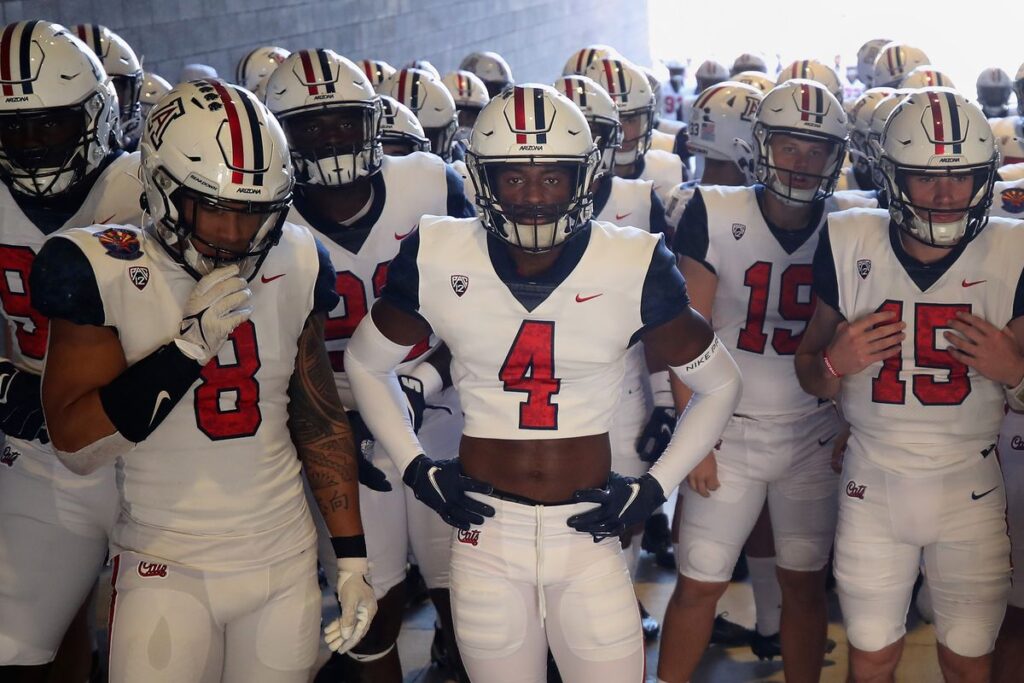Team History
The Arizona Wildcats football program, tracing its origins back to 1899, has long been a cornerstone of collegiate athletics within the University of Arizona. Over the years, the program has witnessed a diverse array of challenges and triumphs, charting a course through the evolving landscape of college football with determination and spirit. This journey is marked by notable achievements, periods of transformation, and a steadfast commitment to excellence, which have collectively forged the Wildcats’ identity in the annals of college sports history.
From its nascent stages, the Wildcats navigated through periods of growth and adversity, gradually establishing a competitive presence on the national stage. The early decades were characterized by modest successes and the foundational laying of traditions that would endure and evolve. Through the dedication of its players, coaches, and supporters, the program began to carve out its niche, setting the stage for future generations of Wildcats to build upon.
Foundation and Early Years
Arizona’s football saga commenced at the turn of the 20th century, embarking on a path that would see the Wildcats emerge from relative obscurity to gain regional and eventually national recognition. The early years were a time of experimentation and learning, as the team grappled with the challenges of establishing a foothold in the competitive realm of American football. These formative years were crucial in developing the resilience and fighting spirit that would become hallmarks of the Wildcats’ ethos.
The program’s early milestones, such as their first bowl appearance in the 1949 Salad Bowl under coach Mike Casteel, highlighted the potential for greatness that lay within. Despite the interruptions caused by World War II, which saw the team not fielding squads in 1943 and 1944, the Wildcats persevered, laying the groundwork for the achievements that would follow. This era set the precedent for the pursuit of excellence, a pursuit that would define Arizona football in the decades to come.
Notable Early Achievements
Significant early achievements began to manifest as the program matured, with individual talents like Art Luppino leading the nation in several categories during the 1950s, showcasing the burgeoning potential of Wildcats football. These accomplishments not only brought attention to the program but also instilled a sense of pride and possibility within the team and its supporters. The Wildcats’ early success stories were emblematic of the individual and collective excellence that the program aspired to achieve.
The initial bowl game appearance in the 1949 Salad Bowl marked a pivotal moment for the Wildcats, symbolizing the program’s transition from a period of development to one of competitive participation on a larger stage. This accomplishment, coupled with the emerging talents of players who would set national records, laid a solid foundation for the future, signaling the Wildcats’ readiness to compete at higher levels of collegiate football.
Periods of Change
The 1960s and 1970s heralded significant changes for the Wildcats, as the program navigated its transition into the Western Athletic Conference (WAC) and later the Pac-10 Conference. This era was marked by both challenges and opportunities, as the Wildcats sought to assert their presence within these new competitive arenas. The move to the Pac-10 in 1978 was particularly transformative, opening up new avenues for rivalry and recognition. It was a period of adaptation and growth, as the Wildcats worked to establish their identity within the changing landscape of college football.
The formation of the Fiesta Bowl by the WAC schools, in response to frustrations over a lack of national exposure, exemplified the proactive steps taken by the Wildcats and their conference peers to enhance their standing on the national stage. Despite the initial struggles in the Pac-10, the Wildcats’ eventual success, highlighted by victories in significant bowl games and the development of standout players, underscored the program’s resilience and adaptability. These periods of change were instrumental in shaping the competitive spirit and ambition that define Wildcats football today.
Championships and Achievements
While the Wildcats have yet to claim a national championship, their history is punctuated by periods of notable success, particularly during the “Desert Swarm” era of the 1990s under coach Dick Tomey. The 1993 and 1998 teams are often celebrated for their formidable defense and explosive offense, respectively, setting benchmarks for excellence within the program. These teams not only achieved significant victories in bowl games but also left a lasting legacy through their contributions to the Wildcats’ rich football heritage.
The “Desert Swarm” defense, known for its aggressive and tenacious play, became a defining feature of the Wildcats’ identity, earning national recognition and respect. Similarly, the offensive prowess of the 1998 team showcased the dynamic capabilities of the Wildcats, further elevating the program’s status. These achievements represent high points in the Wildcats’ history, reflecting the culmination of talent, strategy, and determination that propelled the team to prominence.
Current Roster
Under the guidance of head coach Brent Brennan, the Wildcats’ current roster is a blend of seasoned veterans and promising newcomers, all united by a common goal: to build upon the legacy of their predecessorsand achieve success on the national stage. The team’s composition reflects a strategic mix of talent acquisition and development, with a focus on fostering a competitive and cohesive unit.
The Wildcats’ roster for the 2024 season, meticulously assembled by Brennan and his coaching staff, aims to blend individual skills into a unified force capable of challenging for honors in the Pac-12 and beyond. This approach underscores a commitment to excellence and continuity within the program, ensuring that the Wildcats remain competitive contenders in the ever-evolving landscape of college football.
Management and Coaching Staff
The management and coaching staff of the Wildcats, led by head coach Brent Brennan, are the architects behind the team’s strategic vision and day-to-day operations. Brennan’s leadership is supported by a team of experienced coaches and administrative staff, each bringing their expertise to various aspects of the program. This collaborative effort is central to developing game strategies, recruiting talented players, and fostering an environment conducive to athletic and personal growth.
The coaching staff’s dedication to excellence and development is pivotal in guiding the Wildcats towards achieving their goals, embodying the program’s long-standing traditions while also adapting to the modern demands of college football.
Home Stadium Information
Arizona Stadium stands as a monument to the Wildcats’ storied football history, serving as the battleground for the team’s home games. This iconic venue, with its vibrant atmosphere and passionate fan base, plays a significant role in the collegiate football experience at the University of Arizona. The stadium’s capacity and facilities have evolved over the years, reflecting the growth of the program and its supporters.
It not only hosts thrilling football action but also serves as a gathering place for the community, uniting fans, alumni, and students in support of the Wildcats. The stadium’s significance extends beyond just being a sports venue; it symbolizes the spirit and resilience of the Wildcats football program, offering a home-field advantage that has contributed to many of the team’s most memorable victories.
-
*********** ***** ******* *** ***** ** ************ **** ********* *****dd.mm.yyyy 00:00 PM
-
****** *********** **** ** ***** ****** *** **** *** ******: ********* *** ******* *** ****'* ****dd.mm.yyyy 00:00 PM
-
*********-***** ********: **** 6 **** *** ***** *** * ********* **** 7dd.mm.yyyy 00:00 PM
-
**********-************ *******: ****** ****ć, ******* *******, *** * ********* ********** ********dd.mm.yyyy 00:00 PM
-
********* **** ********* ** *** ***: ********* *** ********* ** ****** ******** **. *** *** *****dd.mm.yyyy 00:00 PM
-
****************** ******* **********: *** ********' **** ****dd.mm.yyyy 00:00 PM







